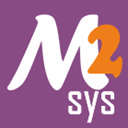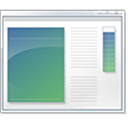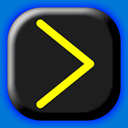Top Hamilton C Shell Alternatives for Windows Users
Hamilton C shell™ offers a comprehensive Unix shell environment for Windows, packed with essential utilities like mv, cp, rm, and grep, along with real chown and su functionalities. It's a robust solution for those seeking a Unix-like command-line experience on Windows, supporting both 32-bit and 64-bit systems up to Windows 10. However, for various reasons—be it specific feature needs, open-source preferences, or integration with other tools—users often look for a strong Hamilton C shell alternative. This guide explores the best options available.
Top Hamilton C shell Alternatives
Whether you're a developer, system administrator, or just someone who prefers a powerful command-line interface, these alternatives offer diverse functionalities that might better suit your workflow than Hamilton C shell.

PowerShell
PowerShell, from Microsoft, is a powerful task automation and configuration management framework. As a free and open-source solution available on Mac, Windows, and Linux, it offers a deeply integrated and optimized-for-Windows scripting environment, making it an excellent Hamilton C shell alternative for users focused on native Windows automation and management.

Cygwin
Cygwin is a Unix-like environment and command-line interface for Microsoft Windows. It's a free and open-source project that provides robust compatibility layers, enabling users to run many Unix applications and utilities directly on Windows, complete with features like SSH and Python support. This makes it a direct and powerful Hamilton C shell alternative for those seeking a comprehensive Unix experience on Windows.

MSYS2
MSYS2 is a free and open-source rewrite of MSYS, built on modern Cygwin and MinGW-w64, designed for better interoperability with native Windows. It provides a complete development environment with a command line/bash interface, regular updates, and IDE support, making it a strong Hamilton C shell alternative for developers needing a robust POSIX-compatible environment on Windows.

Windows Command Prompt
The Command Prompt (cmd.exe) is the native command-line interpreter on Windows NT and subsequent versions. While a commercial product bundled with Windows, it offers a basic command-line interface and scripting capabilities, serving as a fundamental Hamilton C shell alternative for users who require only essential command-line functionalities without additional Unix utilities.

TCC/LE
TCC/LE is a complete, freemium CMD replacement for Windows. It boasts compatibility with existing Windows command prompts and CMD batch files while introducing thousands of new features, including advanced scripting. For users looking for a significantly enhanced native Windows command-line experience beyond what Hamilton C shell offers in terms of CMD compatibility, TCC/LE is an excellent choice.

win-bash
win-bash is a free and open-source Windows port of the popular GNU Bash shell. It aims to provide a full-featured Bash environment on Windows, complete with a command-line interface, interpreter, and terminal emulator. This makes it a direct and powerful Hamilton C shell alternative for users specifically seeking a native Bash experience on their Windows machine.

PyCmd
PyCmd is a free and open-source smart command prompt extension for Windows cmd.exe. Its primary purpose is to emulate powerful features found in UNIX shells, such as decent Tab-completion and persistent history. For users who appreciate Hamilton C shell's Unix-like features but want them integrated directly with the Windows CMD, PyCmd offers a lightweight and effective Hamilton C shell alternative.

CMD++
CMD++ is a free and open-source command-line program developed as an alternative to the Windows console. It's designed to be usable in public places where the native console might be restricted. While it may not offer extensive new features compared to Hamilton C shell, it provides a functional and portable command-line solution for basic tasks on Windows.

Penteract CMD GUI Creator
Penteract CMD GUI Creator is a free Windows tool that allows users to create graphical user interfaces for command-line commands. It simplifies command execution by enabling drag-and-drop file paths and button-click switch selection. While not a direct shell alternative in the same vein as Hamilton C shell, it offers a unique approach to managing command-line interactions, beneficial for users who prefer a GUI for complex commands.
Each of these alternatives offers unique strengths, from deep Windows integration to robust Unix compatibility. We encourage you to explore them based on your specific needs, whether you prioritize open-source solutions, advanced scripting capabilities, or a familiar Unix-like environment on Windows.